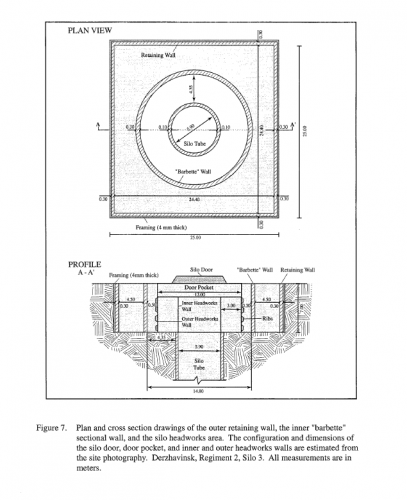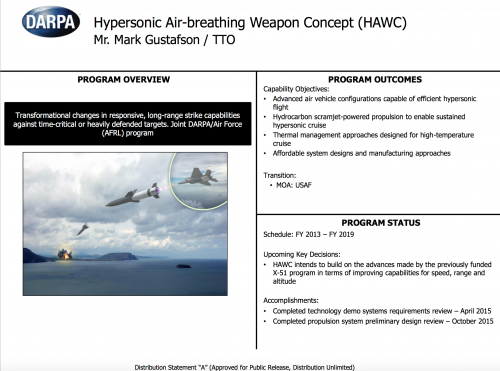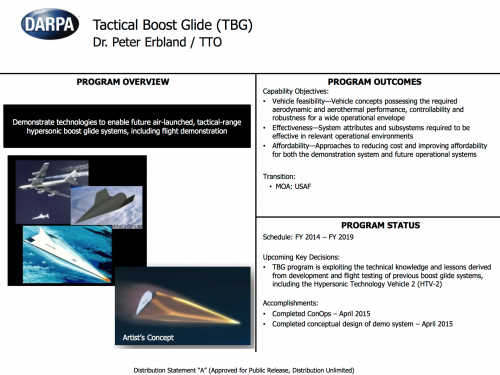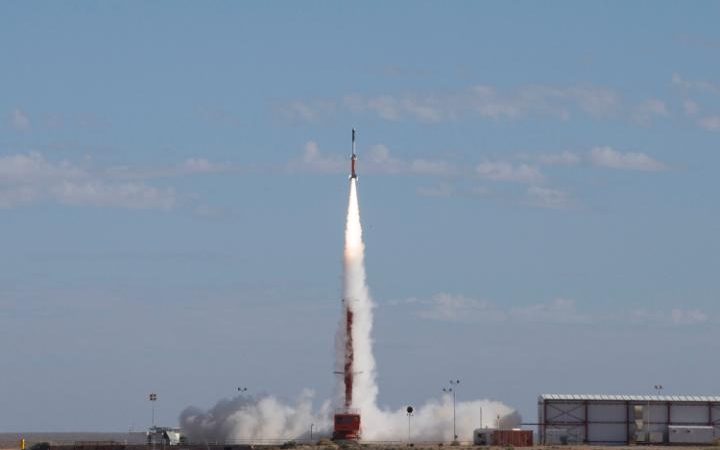- Joined
- 21 April 2009
- Messages
- 13,147
- Reaction score
- 5,988
House panel wants details on CPGS confidence-building measures
April 28, 2016
The House Armed Services Committee wants the defense secretary to provide insight on measures it should take to ensure that adversaries do not mistake a Conventional Prompt Global Strike launch for a nuclear one.
The chairman's mark of the fiscal year 2017 defense policy bill calls on the defense secretary to provide a briefing to lawmakers by Dec. 15, 2016, describing "any reciprocal confidence-building measures (CBM) that are appropriate should the United States deploy a Conventional Prompt Global Strike capability." This CPGS capability is intended to strike anywhere in the world in under an hour using non-nuclear weapons.
The full committee passed the bill in the wee hours of April 28.
However, there is a concern that if the United States launches a CPGS weapon on a ballistic missile trajectory, other nations like Russia could incorrectly believe it was a nuclear weapon and reciprocate in kind.
The defense secretary, in his briefing, should lay out details on how the Pentagon would "address potential risks such as warhead ambiguity, destination ambiguity or survivability of strategic nuclear forces, and an assessment of whether the Department of Defense is concerned about these issues," according to the mark.
In addition, lawmakers want to know "whether measures such as reciprocal notifications of a launch of a CPGS weapon, reciprocal inspections, joint studies on the implications of CPGS capabilities for warhead ambiguity, destination ambiguity or survivability of strategic nuclear forces, and information exchanges on types of CPGS capabilities would be considered, and an explanation as to why or why not."
Lawmakers also seek details on whether other nations are developing similar capabilities, what implications that raises for detection and defense, and whether those countries are considering confidence building measures. The briefing should also look at whether these measures would "vary depending on the delivery vehicles (land- or sea-based), and flight path (i.e., boost-glide, ballistic or other)."
Warhead ambiguity has long been a concern connected to hypersonic weapons, which can fly more than five times the speed of sound and are intended to provide a long-range, rapid, precise capability for destroying high-risk targets that appear only briefly or are heavily guarded.
During a Dec. 8, 2015, House Armed Services strategic forces subcommittee hearing, James Acton, co-director of the Nuclear Policy Program at the Carnegie Endowment for International Peace, expressed concern that DOD hasn't "given adequate attention" to some risks, including whether U.S. adversaries can determine where the weapons are headed after launch. He said "destination ambiguity" -- created by the fact that boost glide CPGS weapons are highly maneuverable -- has to be considered.
"If one fires them say in the direction of Iran, Russia might not know whether that weapon was heading for Russia or Iran," Acton said at the time. "Or if one fired them at North Korea, then Russia or China for that matter might not know whether the target is Russia or China."
Acton noted that much of the discussion over these weapons has been "swallowed up" by the issue of warhead ambiguity that stemmed from the idea of placing these conventional weapons on ballistic missiles.
The Pentagon is seeking $181.3 million for the program in FY-17, up from the $78.8 million requested in FY-16. Lawmakers ultimately provided $88.8 million for the program last year.
The House Armed Services Committee increased the amount for CPGS by $5 million to $186.3 million for "examination of Army land-attack and anti-ship capability." However, a provision in the strategic forces subcommittee mark fences off 25 percent of all CPGS funds until senior defense leaders can provide details on whether such a program is a priority and if the proposed time table works
-----------------------------------------------------------
Just dust off the 2006 or 2008 NAP Report that goes through all these issues AND THEN build the biggest heavy lift CPGS missile that can fit in the Vandy silos. ;D
April 28, 2016
The House Armed Services Committee wants the defense secretary to provide insight on measures it should take to ensure that adversaries do not mistake a Conventional Prompt Global Strike launch for a nuclear one.
The chairman's mark of the fiscal year 2017 defense policy bill calls on the defense secretary to provide a briefing to lawmakers by Dec. 15, 2016, describing "any reciprocal confidence-building measures (CBM) that are appropriate should the United States deploy a Conventional Prompt Global Strike capability." This CPGS capability is intended to strike anywhere in the world in under an hour using non-nuclear weapons.
The full committee passed the bill in the wee hours of April 28.
However, there is a concern that if the United States launches a CPGS weapon on a ballistic missile trajectory, other nations like Russia could incorrectly believe it was a nuclear weapon and reciprocate in kind.
The defense secretary, in his briefing, should lay out details on how the Pentagon would "address potential risks such as warhead ambiguity, destination ambiguity or survivability of strategic nuclear forces, and an assessment of whether the Department of Defense is concerned about these issues," according to the mark.
In addition, lawmakers want to know "whether measures such as reciprocal notifications of a launch of a CPGS weapon, reciprocal inspections, joint studies on the implications of CPGS capabilities for warhead ambiguity, destination ambiguity or survivability of strategic nuclear forces, and information exchanges on types of CPGS capabilities would be considered, and an explanation as to why or why not."
Lawmakers also seek details on whether other nations are developing similar capabilities, what implications that raises for detection and defense, and whether those countries are considering confidence building measures. The briefing should also look at whether these measures would "vary depending on the delivery vehicles (land- or sea-based), and flight path (i.e., boost-glide, ballistic or other)."
Warhead ambiguity has long been a concern connected to hypersonic weapons, which can fly more than five times the speed of sound and are intended to provide a long-range, rapid, precise capability for destroying high-risk targets that appear only briefly or are heavily guarded.
During a Dec. 8, 2015, House Armed Services strategic forces subcommittee hearing, James Acton, co-director of the Nuclear Policy Program at the Carnegie Endowment for International Peace, expressed concern that DOD hasn't "given adequate attention" to some risks, including whether U.S. adversaries can determine where the weapons are headed after launch. He said "destination ambiguity" -- created by the fact that boost glide CPGS weapons are highly maneuverable -- has to be considered.
"If one fires them say in the direction of Iran, Russia might not know whether that weapon was heading for Russia or Iran," Acton said at the time. "Or if one fired them at North Korea, then Russia or China for that matter might not know whether the target is Russia or China."
Acton noted that much of the discussion over these weapons has been "swallowed up" by the issue of warhead ambiguity that stemmed from the idea of placing these conventional weapons on ballistic missiles.
The Pentagon is seeking $181.3 million for the program in FY-17, up from the $78.8 million requested in FY-16. Lawmakers ultimately provided $88.8 million for the program last year.
The House Armed Services Committee increased the amount for CPGS by $5 million to $186.3 million for "examination of Army land-attack and anti-ship capability." However, a provision in the strategic forces subcommittee mark fences off 25 percent of all CPGS funds until senior defense leaders can provide details on whether such a program is a priority and if the proposed time table works
-----------------------------------------------------------
Just dust off the 2006 or 2008 NAP Report that goes through all these issues AND THEN build the biggest heavy lift CPGS missile that can fit in the Vandy silos. ;D





